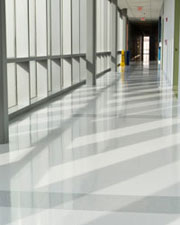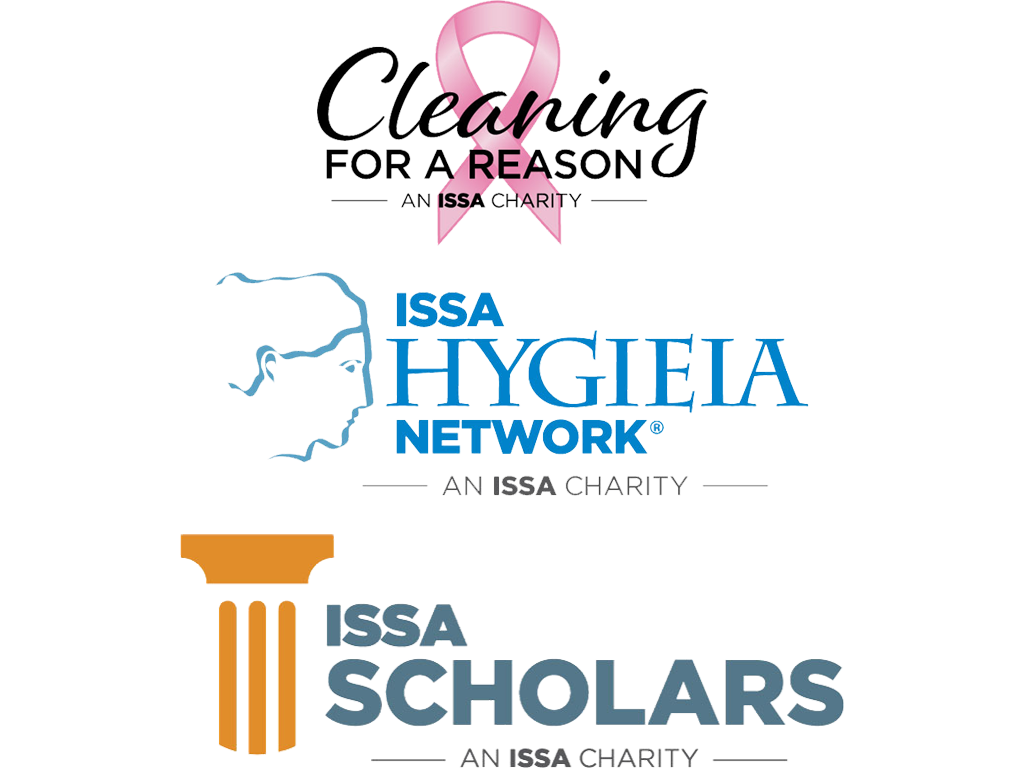Articles
Linoleum Floor Care Tips
Categories: Cleaning Applications
By Debby Davis | March 22, 2018 << Back to Articles
Accessible by: anyone
Cleaning professionals may be a bit surprised to hear that linoleum floors—first introduced more than 120 years ago—are making a comeback. But while this flooring material used to be found mainly in homes and residential facilities, it is now becoming popular in commercial locations. The key reason for this trend is that many types of linoleum floors are considered a green or more sustainable floor covering option, especially when compared to the more traditional and very popular vinyl composite tile (VCT).
Vinyl is a synthetic product made of petrochemicals and other components, most of which are not sustainable. Linoleum, on the other hand, is typically made of a variety of ingredients including linseed oil, cork dust, tree resins, and wood flour (finely pulverized wood that is finer than sawdust), all of which are renewable resources. Linoleum has two other features that commercial property developers and owners appreciate: it is fire retardant and water resistant.*
However, cleaning professionals should know that linoleum floors have very specific cleaning needs. While we address many of these issues here, we advise cleaning pros that still have questions about how to care for this type of flooring to discuss the issues in more detail either with the flooring manufacturer or an astute jansan distributor familiar with these types of floors.
The first step cleaning professionals should take is to confirm that the floor is indeed linoleum. While older linoleum floors were relatively easy to identify, new designs and manufacturing techniques can prove deceiving. If the customer is unsure about what material the floor is, ask if they still have any extra pieces of the flooring in boxes or storage. The package labeling will likely indicate exactly what the material is. If this is not available, you can often determine the type of floor by touch. A VCT floor is typically very smooth, whereas a linoleum floor will feel slightly granular, even if it has been finished.
Chemical Issues
Linoleum floors can be very sensitive to chemicals, especially the kinds of traditional cleaning chemicals used on VCT floors. In general, it’s best to use pH-neutral cleaning solutions following manufacturers’ recommended dilution ratios.
High-pH or high-alkalinity strippers and cleaners can damage linoleum floors. In fact, frequent use can not only impact the look of the floor, but can also cause cracking, shrinking, and even discoloration. Additionally, using too much water to clean these floors can cause problems. Linoleum is installed in sheets, and there may be small openings between each sheet. Water can seep into and under these openings, which can result in mold and mildew and even cause the floor to rot.
When applying finish to linoleum flooring, first check to see if the manufacturer has recommended certain types of products. If not, water-based, polymeric-type floor finishes are often appropriate. One to three coats of finish should be sufficient. Using a water-based finish will help protect the floor, prevent spills and soiling from damaging or potentially discoloring the floor, and provide a shine. These products are also relatively easy to remove when refinishing is necessary. Remember to avoid using high-pH strippers and other harsh chemicals on linoleum floors.
Periodic Machine Maintenance
As to periodic machine maintenance, if there is a finish on the floor, most linoleum floors can be machine buffed after normal cleaning. A 175-rpm floor machine can be your best friend when maintaining a linoleum floor. Just as with VCT and other types of floors, using a 175-rpm buffing pad will clean and restore the shine on the floor. Light to medium scrubbing pads can also be used in areas where excessive soiling is present. However, heavy scrubbing should be performed with considerable caution, as this may damage linoleum.
When stripping a linoleum floor, mix approved linoleum-stripping chemicals with water per the chemical manufacturer’s instructions. Work on a relatively small area at a time, allowing the chemicals to dwell on the floor for 10 minutes or more, but take caution not to allow the solution to dry on the floor.
Again, using a 175-rpm floor machine, strip the floor using a red pad (or similar). If a heavier or more aggressive pad is necessary, try a blue pad, but avoid using anything more abrasive than that, as it may damage the floor. It may take more than one pass and application of stripper to remove all the finish on the floor depending on how much finish has been applied. Again, because of the potential for damage, performing several passes is recommended over using more powerful chemicals or more aggressive pads. Use a wet/dry vacuum after rinsing to help dry the floor and ensure moisture does not seep under the linoleum.
When refinishing, applying one to three coats of finish is generally sufficient for a nice shine. If the customer requires a higher gloss, additional coats can be applied.
As with all floor care, do your research and ask questions before proceeding with the cleaning, care, and maintenance of linoleum floors. Performing the work properly keeps the customer happy. Mistakes, on the other hand, can prove to be costly.
*Attributes apply to most types of linoleum.
About the Author.
Debby Davis, an industry veteran who is well-versed on floor care issues, is product manager for Powr-Flite, a manufacturer of professional cleaning equipment. She may be reached via her company website at www.powr-flite.com.


